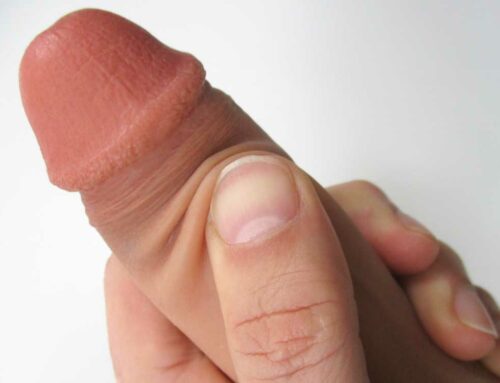We often get asked about care tips for our FTM packers, so we put together this care guide addressing the most frequently asked questions.
How often should I clean my packer?
This depends on the amount of use as well as the type of packer. If we’re talking about an STP (stand to pee) packer, clean it each day of wear. Ideally, it’s great to flush with water after use, but that’s obviously not practical in a public setting. If we’re talking about a play packer, then clean it after each intimate use and also before, if it hasn’t been used in a while.
What soaps should I use to wash my packer?
Avoid bars of soap, as they tend to be very alkaline and can mess with your natural body flora. Ideally use an unscented, PH balance soap that is in the 4-5.5 PH range, which is optimal for healthy natural flora. Gentle hand-foaming soaps are generally just fine too for your body and the packer. Also, avoid soaps that contain heavy fragrances and especially avoid soaps that contain essential oils as these oils can be very corrosive to silicone. Tea tree oil and eucalyptus oil are the worst offenders!
What powder should I use on my packer?
Ideally, you shouldn’t need to powder your packer, but even with high-quality packers, it can be nice to give them a powdering every once in a while to give them a fresh, silky feel. But the question of what powder to use is a contentious one, so this point deserves some closer attention. Let’s look at the most commonly discussed options.
Corn starch
There’s a pervasive doctrine in trans circles, recommending corn starch as the go-to powder for packers. There are a few reasons we would not recommend this. Because corn starch is a carbohydrate, it can breed fungal and bacterial substances when exposed to moisture, causing mold and yeast infections, so the last thing you want near your genitals. As a general rule, you want to stay away from food substances, because lots of living things feed on food-based powders. Yes, corn starch is an ingredient in many body powders, but then they are combined with other ingredients such as preservatives and anti-microbial agents, so we’re not saying corn starch is a no-go, but straight from the baking isle, 100% corn starch is not a good idea.
Talcum powder
You may have heard that using talcum powder is a no-go for packers and for good reason! There is some evidence suggesting that using talcum powder on one’s genitals can lead to cervical cancer so the growing consensus is that to be on the safe side, don’t powder your bits with talcum powder. It seems the issue isn’t actually talcum powder itself, but as it is a mined substance it can be contaminated with asbestos and that is most definitely an evil cancer-causing substance.
However most countries have pretty strict testing guidelines to ensure that consumer-grade talcum powder is asbestos free and because it is a mineral rather than a food, it can’t go moldy and won’t attract bacteria. It also has excellent lubricating properties so it really does feel silkier on your packer than pretty much any other powder. Also, if you’re giving your packer a quick rinse after applying talcum powder, the very small trace amounts left on your packer really can be deemed to be perfectly safe and is certainly a safer option than 100% corn starch.
100% pure talcum powder can be difficult to find on store shelves, so you may have to resort to Amazon to find this. Also if you are understandably still concerned, here’s some further reading from the American Cancer Society on the possible links between talcum powder and cancer.
Baby powder
Baby powder comes in many different formulations these days and contains ingredients such as talcum powder, corn starch, tapioca starch and bentonite clay amongst others. They can be a great option if you are seeking a talcum powder free alternative to corn starch. Our recommendation would be to seek out unscented or fragrance-free options and check the ingredients list for anything of concern to you.
Body powder
Like baby powder, these come in many formulations. Again, we recommend opting for unscented as some body powders contain essential oils which can be detrimental to your packer.
Setting powder
Another option is to use a setting powder ie the powder that is used to “set” makeup. These powders are also made of many different formulations, usually oxides and silica. We recommend looking for ingredients that are mineral based instead of food based for reasons discussed earlier. These powders are designed to be applied directly to delicate areas of the face, and hence they are skin safe, but for obvious reasons, setting powders have not been extensively tested on their effects of long-term contact with genitals, so this is a bit of an unknown. It’s also a much more expensive option than any of the above options.
Some prosthetics makers will sell you “special” packer powder, and this is usually some kind of setting powder. It’s also worth noting that many setting powders do also contain talcum powder.
Powdering your packer
Firstly, it’s worth mentioning that with any fine powder, you don’t want to be breathing in the particles, so be mindful of how you handle it. We recommend putting a small amount of powder in a gallon zip lock bag that you briefly open to dab your packer in and seal it right back up. Just a small amount of powder will last you many dustings. If you want to play it super safe, then wear a face mask when applying the powder.
Follow these instructions:
- Firstly, wash your packer (with PH balanced soap)
- Dry it thoroughly with a towel
- Dab your packer in powder, taking care not to stir up the powder so it becomes airborne
- Rub it into your packer. A small amount will go a long way.
- For talcum powder, add these last two steps
- Give it a quick rinse with water
- And dry it again
This will leave a negligible amount of powder on your prosthetic and should leave your packer feeling silky smooth.
How should I store my packer?
It’s really important that you store your packers apart from other toys. Toys are made of many different materials and some of them can interact very badly with each other. Keep your packer in its own bag or box, in a discreet location such as your underwear drawer.
Can I sterilize my packer?
As long as it’s a high-quality packer made of silicone, then yes. Bring a large pot of water to boil and place your packer into the water. Set a timer for 10 minutes and do not leave the pot unattended as it’s just way too easy to get distracted and come back to a burnt willy at the bottom of a dry pot an hour later.
But be careful! Cheaper packers, such as Mr Limpy are often made of TPUs (thermoplastic polyurethanes) which are heat sensitive and will melt above a certain temperature. You can test this by heating up a metal skewer and touching it to your prosthetic to see if the material melts. If it does, DO NOT BOIL THIS PACKER!
Other things to know
Another thing that can be kryptonite to packers besides essential oils is chlorine. Don’t take your packer into chlorinated pools as that will drastically reduce its life span.
Lastly
With so much conflicting information on the internet, especially about corn starch and talcum powder, things can get pretty confusing very quickly so we hope this distillation of information has been helpful. Ultimately this is an overview and we very much encourage you to do further research. After all, we have a pretty intimate relationship with our packers. For something that spends a lot of time in very close proximity to our privates, we want to make sure we have good hygiene practices in place to ensure our packers live long and happy lives.





Interesting. Ive always used corn starch on my packers, without any problems.
Pour a couple of tablespoons of whatever powder into a gallon freezer bag, they are more durable, and drop in your packer. Do the ‘shake and bake’ method, let the dust settle and retrieve your packer.
Use a damp paper towel to wipe off the excess powder, let it air dry, and stow ot appropriately.
So what powder DO you recommend? I’m confused LOL… It’s a bit tricky to make out from the text, I think!
Well there’s pros and cons that you want to be aware of for all of them, but personally, I use 100% pure talcum powder and give my prosthetics a very quick rinse after applying meaning an absolutely negligible amount stays on the packer. I opt for this because it gives the silkiest finish, and is essentially anti microbial meaning it won’t attract any nasty bacteria.
Are there pool safe packers?
That’s a great question. For chlorinated pools, not really in that chlorine will damage pretty much anything, but you can use cheaper, more disposable packers. You can also get foam padding that’s designed to be inserted in the crotch, much like the padding in bras, and that might be the best option for chlorinated pools.